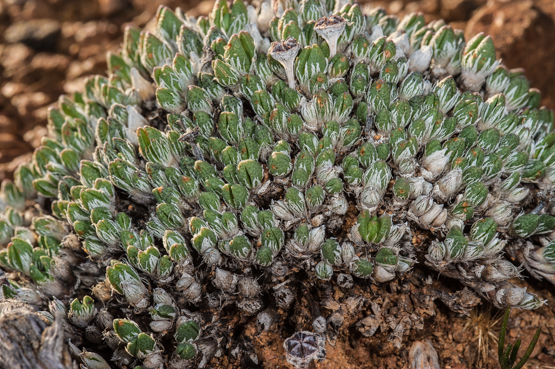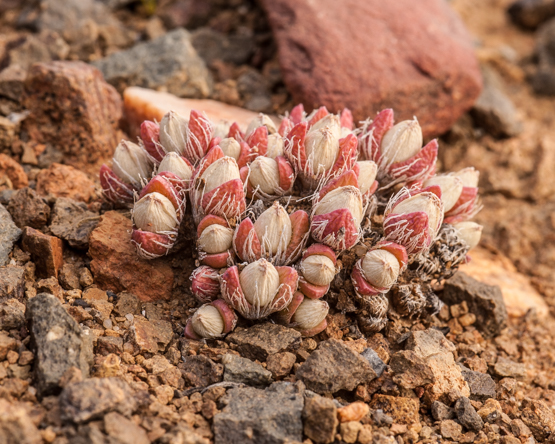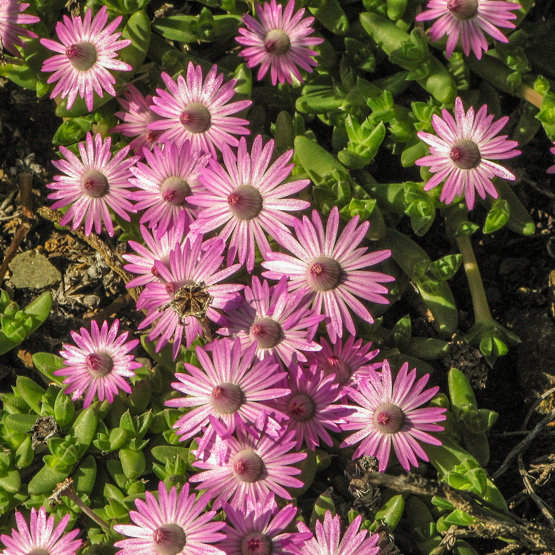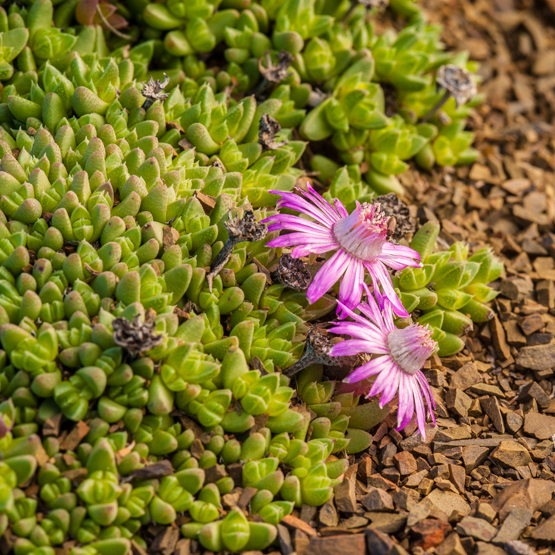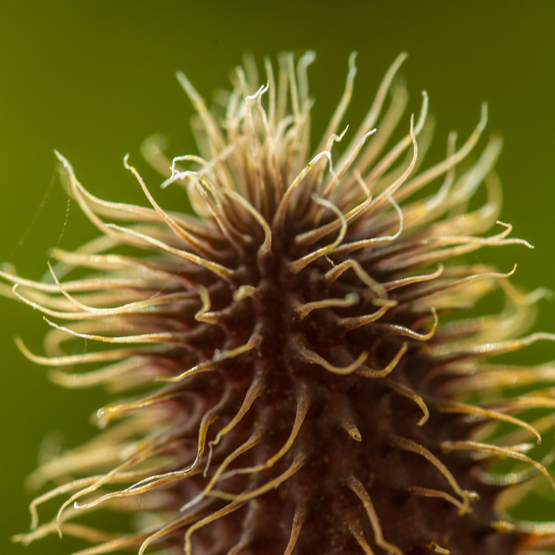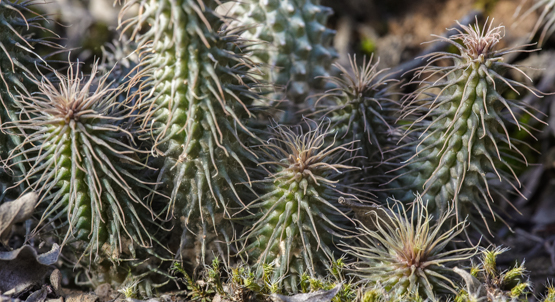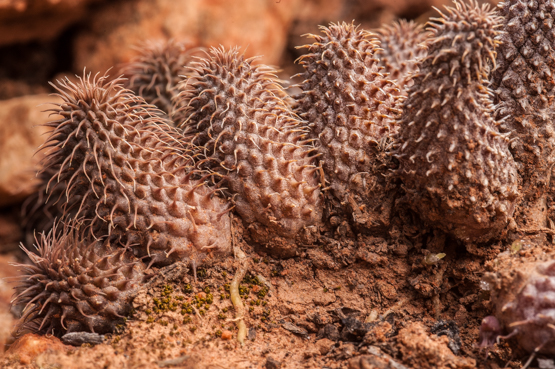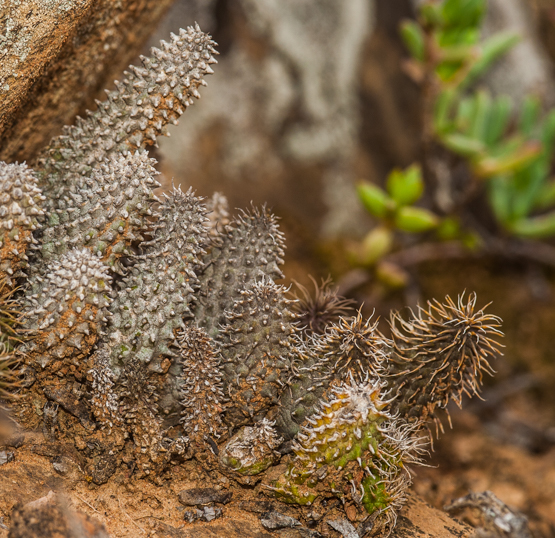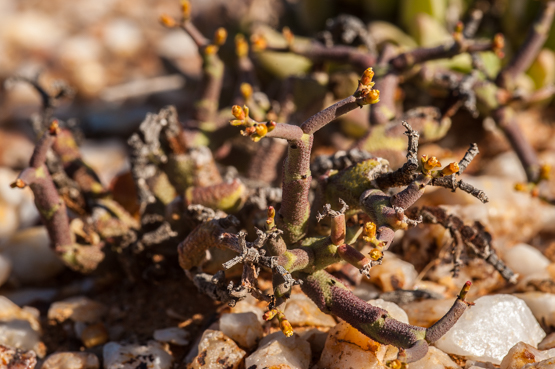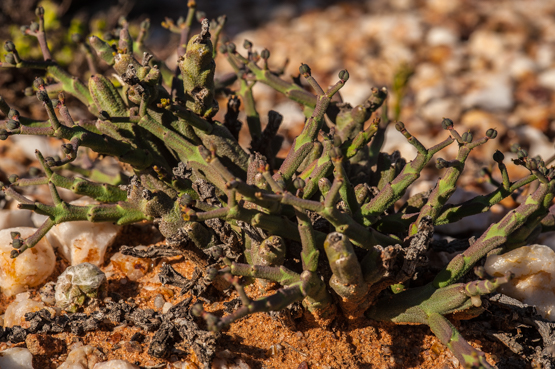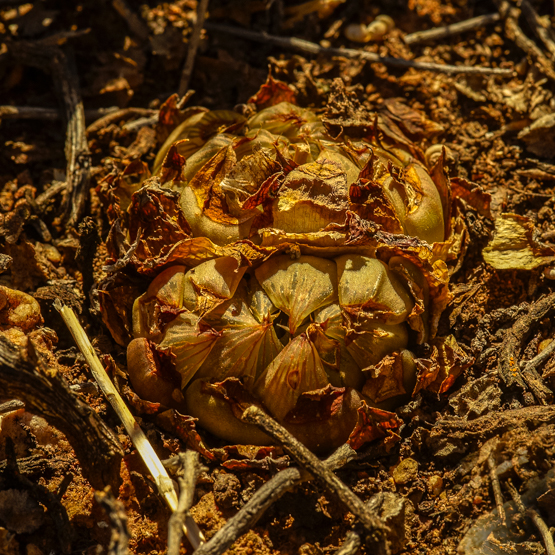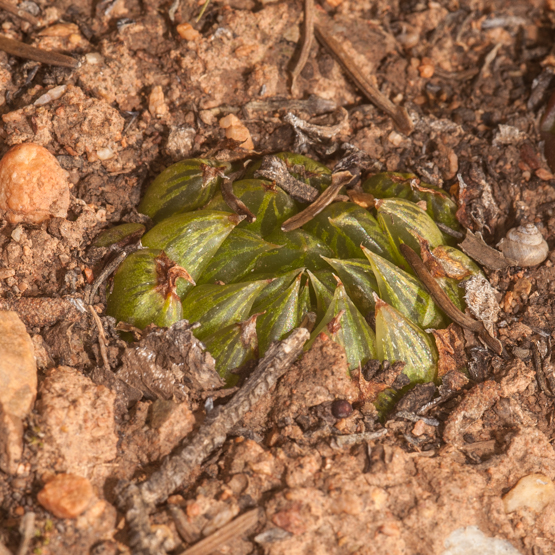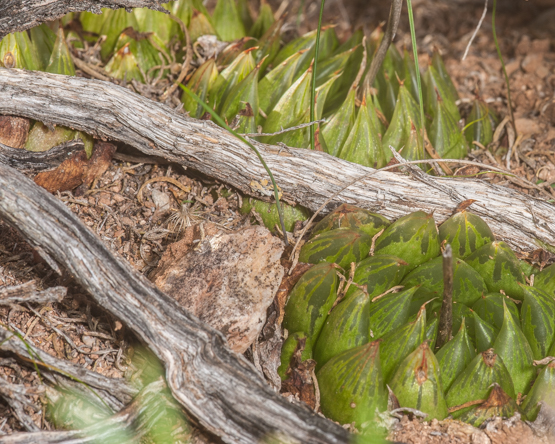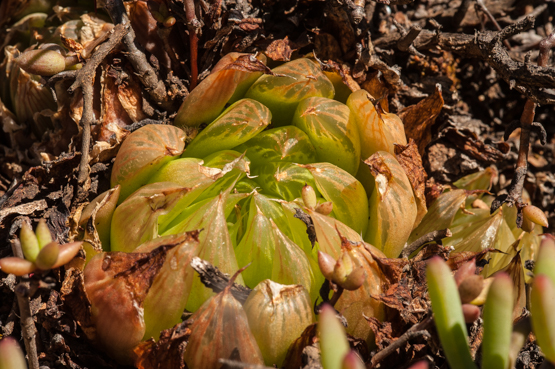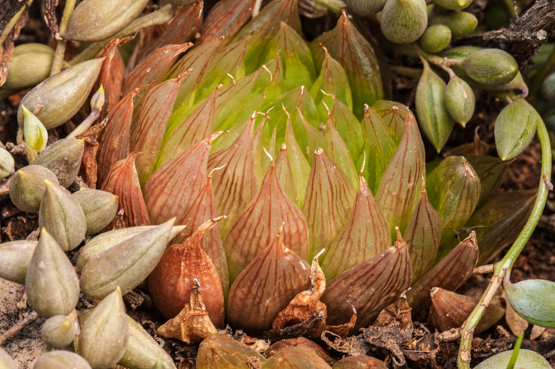It may be of interest to see what Prof. Schwantes in his magnum opus Flowering Stones and Mid-Day Flowers (1957) has to say about this “most remarkable and interesting species”: “This forms annually only two pairs of leaves to each growth which, however, are differently shaped. This phenomenon is called dimorphism of the leaf. The pair of leaves that appears at the beginning of the rainy season from out of the dry sheath is united into a long sheath at the base but developed normally above into widely separated, yawning, broad leaf tips. This pair of leaves with its comparatively broad surfaces that catch the light and absorb carbon dioxide as nourishment, provides food during the growth period. When the end of this period approaches there pushes out of the channel formed through the uniting of these normally developed leaves a peculiar, elongated, cylindrical structure which consists of two leaves joined right up to the tip. The very short ends are separated only by a slit, which shows that the growth actually consists of two thick leaves. Growths which consist of such closely united leaves are called plant bodies (corpusculum). The object of this close union can only be to reduce the evaporating surface as much as possible and to protect the young growth within from being dried up. The plant’s struggle to make the leaf pair as nearly spherical as possible is here obvious; as is known, the sphere is the form with the smallest surface area. Within these leaf pairs or plant bodies the next pair develops, which once more is less completely united. Inside the body a channel running its whole length remains open; the slowly developing leaf pair is fitted into this and draws from the plant body food and water until it has dried up to a parchment-like skin which completely surrounds the young pair so that not even the tip projects. In this condition the growth, well protected by the skin, lives through the dry period and when the rains begin the deeply buried pair of leaves quickly emerges from the skin surrounding it. In Ruschia pygmaea quite distinct leaf pairs are produced for the dry and for the rainy seasons, one of which has a large surface for assimilation, while the other serves for the protection of the resting pair.”
Month: July 2015
Antimima pygmaea (part 1 of 2)
There are not many plants that look better or more interesting in the resting state than during active growth, but this species is certainly one of them.
The plants form low, densely branched mats to 15 cm in diameter.
The leaf pairs are dimorphic. One pair is almost fused almost completely, to 5 mm tall and 3 mm wide, developing into a conical body which turns into a dry sheath protecting the subsequent leaf pair during the dry period. These white bodies become slashed with time and are typical for the species.
The plants occur on shaly slopes in a smallish area between Worcester and Laingsburg.
Irrespective of the statement in the first sentence of this post, the plants are quite cute when in flower. The flowers are up to 18 mm across and appear in winter (July-August).
Huernia pillansii (part 2 of 2)
Huernia pillansii (part 1 of 2)
With its almost furry stems this species is easy to identify, even without flowers.
Only Stapelianthus pilosus from Madagascar is somewhat similar.
The stems are normally 1.5-6 cm long, but may reach as much as 18 cm; they usually have 10-16 spiral or vertical series of tubercles ending in long hairs. These hairs shade the stems and thereby reduce water loss.
The flowers have an unusual appearance too and appear in spring and summer (Dec.-May).
The plants are found sporadically on stony slopes and clayey flats from Montagu eastwards to Steytlerville in the Eastern Cape and in the Great Karoo from Matjiesfontein to Beaufort West. They occur mostly in the shade of low bushes.
Euphorbia muricata
E. muricata belongs to a group of spineless, shrubby Euphorbias which are often difficult to tell apart. This species however, is distinctive because of the rough surface of the branches.
The plants reach a height of up to 60 cm and occur from the Knersvlakte to Calvinia on gentle slopes and loamy flats.
Photos taken on the Knersvlakte 1 Sept. 2010.
Euphorbia muricata
E. muricata belongs to a group of spineless, shrubby Euphorbias which are often difficult to tell apart. This species however, is distinctive because of the rough surface of the branches.
The plants reach a height of up to 60 cm and occur from the Knersvlakte to Calvinia on gentle slopes and loamy flats.
Photos taken on the Knersvlakte 1 Sept. 2010.
